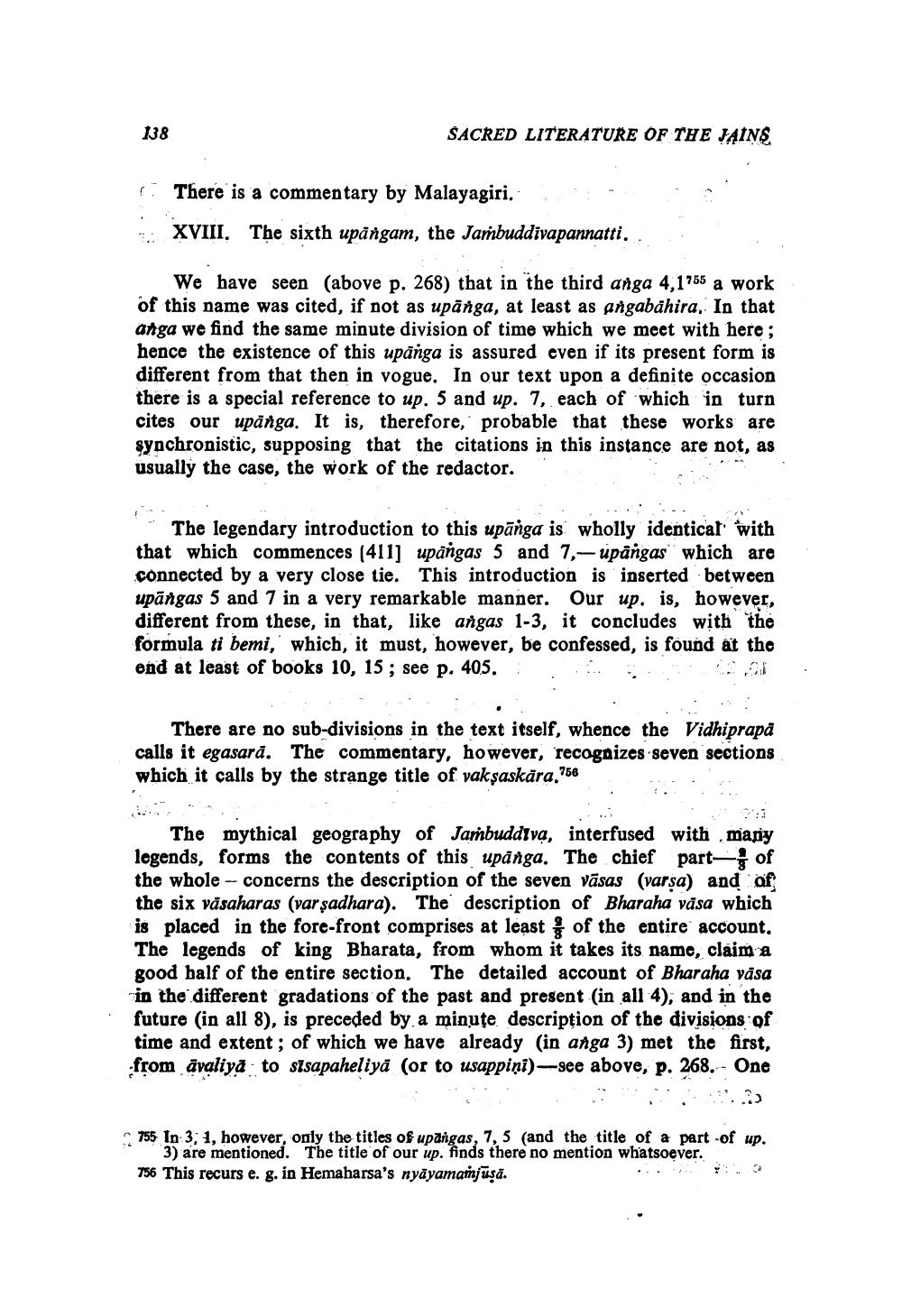________________
138
SACRED LITERATURE OF THE JAIN
There is a commentary by Malayagiri. sXVIII. The sixth upangam, the Jambuddivapannatti..
We have seen (above p. 268) that in the third anga 4,1755 a work of this name was cited, if not as upanga, at least as angabähira, In that anga we find the same minute division of time which we meet with here; hence the existence of this upānga is assured even if its present form is different from that then in vogue. In our text upon a definite occasion there is a special reference to up. 5 and up. 7, each of which in turn cites our upanga. It is, therefore, probable that these works are synchronistic, supposing that the citations in this instance are not, as usually the case, the work of the redactor.
The legendary introduction to this upānga is wholly identical with that which commences (411] upangas 5 and 7,- upangas which are connected by a very close tie. This introduction is inserted between upāngas 5 and 7 in a very remarkable manner. Our up. is, however, different from these, in that, like angas 1-3, it concludes with the formula ti bemi, which, it must, however, be confessed, is found at the end at least of books 10, 15; see p. 405. ... .
There are no sub-divisions in the text itself, whence the Vidhiprapa calls it egasarā. The commentary, however, recognizes seven sections which it calls by the strange title of vaksaskära.758
The mythical geography of Jambuddiva, interfused with mapy legends, forms the contents of this upanga. The chief part of the whole -- concerns the description of the seven Vāsas (varsa) and af the six väsaharas (var şadhara). The description of Bharaha vasa which is placed in the fore-front comprises at least of the entire account. The legends of king Bharata, from whom it takes its name, claim a good half of the entire section. The detailed account of Bharaha vasa in the different gradations of the past and present in all 4), and in the future (in all 8), is preceded by a minute description of the divisions of time and extent; of which we have already (in anga 3) met the first, from avaliya to sisapaheliya (or to usappiņi)-see above, p. 268.- One
755 In 3, 1, however, only the titles of upangas, 7,5 (and the title of a part of up.
3) are mentioned. The title of our up. finds there no mention whatsoever. 756 This recurs e. g. in Hemaharsa's nyāyamanjusa.




